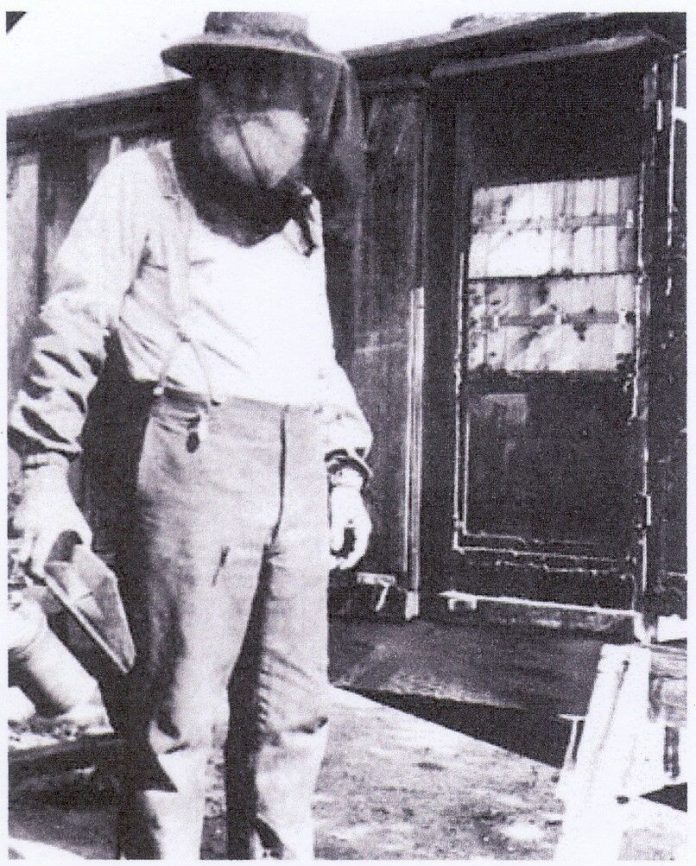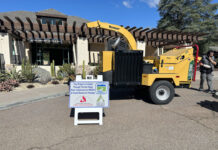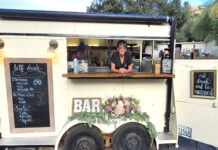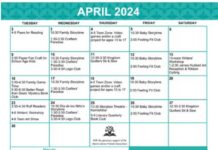Struggling prospector John Harbison didn’t strike gold in California until he started raising bees in the Alpine-Harbison Canyon area!
The man once known as the “King of the Beekeepers” will be celebrated during the 2nd Annual Queen Bee Brunch on Saturday, June 23, at the Alpine Community Center., 1830 Alpine Blvd., in Alpine
Struggling prospector John Harbison didn’t strike gold in California until he started raising bees in the Alpine-Harbison Canyon area!
The man once known as the “King of the Beekeepers” will be celebrated during the 2nd Annual Queen Bee Brunch on Saturday, June 23, at the Alpine Community Center., 1830 Alpine Blvd., in Alpine
Featuring a fashion show, honey favors, vendors, entertainment and mimosas, the celebration of the area’s honey history will be from 10:30 a.m. to 2 p.m. The Alpine Mountain Empire Chamber of Commerce and the Community Center are presenting the event.
“John Harbison came to California looking for gold,” said President Tom Myers of the Alpine Historical Society. “He was a prospector. He had some limited success (in the Sacramento area). Then he found gold in a different way.”
Harbison had learned about beekeeping from his father on the family farm near Freedom, PA.
Invited to the San Diego area by R.G. Clark, who would become his business partner, Harbison flourished here as a beekeeper, inventor and businessman.
“Mr. Clark thought the honey (Harbison was producing) was superior to others here,” Myers said. “San Diego honey was spicier because of the nectar from the local native plants.”
Harbison developed a “section honey box” as part of his California Hive that was better for bees and easier to ship them long distances from Pennsylvania.
His smaller hive was patented in 1859. Harbison’s gross sales from bees that year were nearly $30,000.
Harbison’s success triggered the “greatest mass movement of honey bee colonies the world has ever seen,” according to the Alpine Historical Society.
“The dramatic expansion in the 20 years from 1858, when Harbison developed his ‘California Hive’ (a standard setting bee hive box), to the record setting production of 2,075,000 pounds of honey produced out of San Diego County in 1878, speaks volumes about the impact that Harbison’s innovations had on beekeeping and California agriculture as a whole,” said Executive Director Jeff Morris of the Alpine Mountain Empire Chamber.
Unfortunately, Myers said, the honey bees were blamed for some area crop damage.
“It sort of became a range war about whether the bees were better or the crops,” he said, noting the bees were feasting on fruit already damaged. “I think a lot of settlers came here as a result of Harbison’s success with bees. They thought they could strike it rich.”
Richard Edwords of Kamps Propane, a beekeeper who will have a honey sales booth at the Queen Bee Brunch, described Harbison’s impact on beekeeping as huge.
“When you think of what he did, it was amazing,” Edwords said. “His hive design has been changed slightly over the years, but it’s still basically his design.”
To learn more about the area’s honey history, tickets for limited Queen Bee Brunch seats are available now at $40 each at the Chamber, 1620 Alpine Blvd., Suite 208; the Alpine Community Center; Dana’s Boutique, 2271 Alpine Blvd.; Postal Annex, 2710 Alpine Blvd., Ste. K; at Alpinechamber.com and AlpineCommunityCenter.com.












